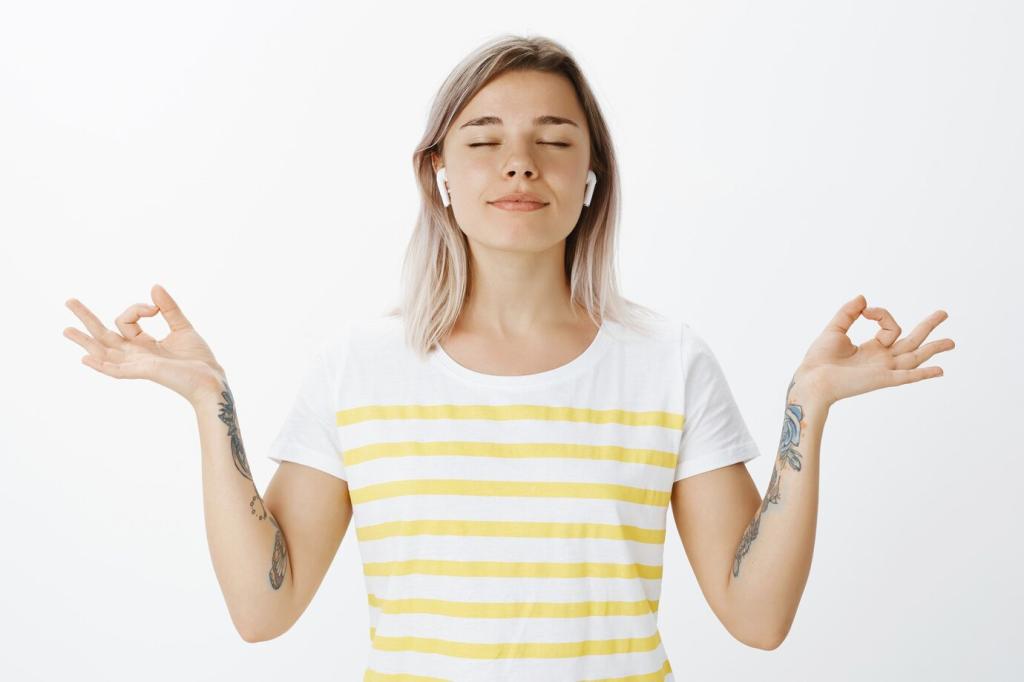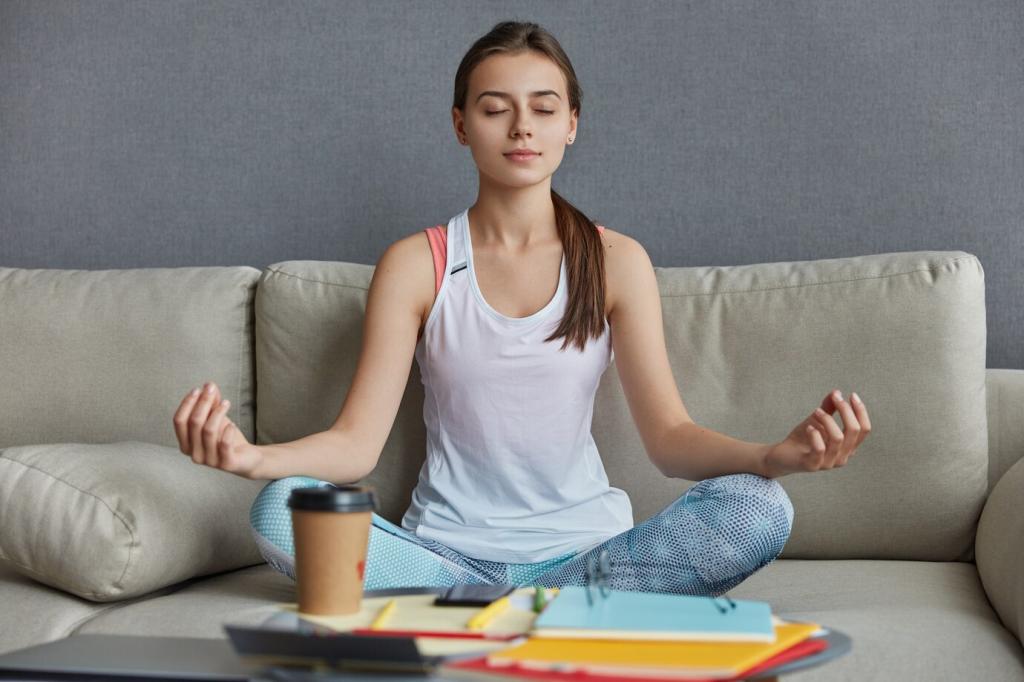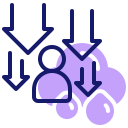Zen Meditation for Reducing Anxiety
Chosen theme for today: Zen Meditation for Reducing Anxiety. Settle into a kind, steady breath as we explore how stillness, clarity, and small daily rituals can loosen worry’s grip. Share your reflections and subscribe for weekly calm practice prompts.

What Anxiety Signals
In Zen, anxiety is a messenger, not a verdict. It signals perceived threat, uncertain outcomes, and protective habits. When we sit, we listen without arguing, allowing the body to soften and the message to become intelligible.

The Zen View of Thoughts
Thoughts are like clouds crossing a boundless sky. We notice form and movement, yet we do not chase them. With practice, the sky feels larger, and each anxious cloud has more room to dissolve.

A Brief Story: The Teacup
A student arrives frantic, tea sloshing. The teacher pours until the cup overflows. “Like this cup, your mind is too full to receive.” Sitting emptied some urgency; clarity returned. Share your own teacup moment below.
Breathing Practices That Anchor Peace
Gently inhale, count one; exhale, count two—continue to ten, then start again. If you lose the count, smile and begin anew. Comment with how many rounds help you feel anchored today.
Breathing Practices That Anchor Peace
Try four counts in, six to eight counts out. Longer exhales stimulate parasympathetic calm, easing fluttering thoughts. Notice how your shoulders respond, and note your experience in a quick journal line afterward.


Creating a Quiet Zen Space at Home
Choose a Simple Seat
Select a cushion, folded blanket, or sturdy chair. Comfort supports consistency. Let your posture feel dignified yet relaxed, like a mountain that breathes. Share a photo or description of your setup to inspire others.


Sound, Light, and Scent
Soft, indirect light settles the eyes. Gentle background sounds—rain, distant traffic, or silence—can steady attention. A mild natural scent, if helpful, signals your nervous system: now we rest.
Daily Routines to Ease Spirals
Before notifications, sit for five quiet minutes. Notice your first thought, your first breath, your first impulse. Choosing presence first shapes the day’s texture toward steadiness and gentle attention.
Walk slowly for five minutes, feeling the foot touch, lift, and place. Count ten steps, pause, breathe, repeat. This practice loosens tension and resets your emotional pacing between obligations.
After sitting, write one line: “Today, anxiety taught me…” This simple reflection turns discomfort into wisdom, helping patterns reveal themselves over weeks. Share your favorite lines with our community.

Working Kindly with Difficult Emotions
Softly label sensations: fluttering chest, tight jaw, shallow breath. Naming invites regulation. Stay with the raw data, not the story. Track changes every thirty seconds and notice impermanence at work.
Working Kindly with Difficult Emotions
Whisper, “May I be peaceful. May I feel safe.” On the exhale, extend kindness to others. This gentle expansion reduces self-judgment, loosening anxiety’s grip through warmth rather than argument.


Slow, steady breathing may calm the sympathetic surge that accompanies anxiety. Many practitioners report lower heart rate and clearer thinking after consistent practice, aligning with emerging evidence on breath-focused regulation.

Repeated attention training appears to strengthen networks for focus and self-regulation. Over weeks, this can translate into a felt sense of space between trigger and response, making reactive spirals less sticky.

Preliminary studies on mindfulness-based practices indicate reductions in perceived stress and anxiety symptoms. While results vary, consistent, gentle practice tends to yield steadier moods and fewer catastrophic thought loops.
Commit to five minutes daily for two weeks. Track breaths counted, moments noticed, and mood shifts. Comment “I’m in” to join others, and we’ll send gentle reminders in our weekly note.

